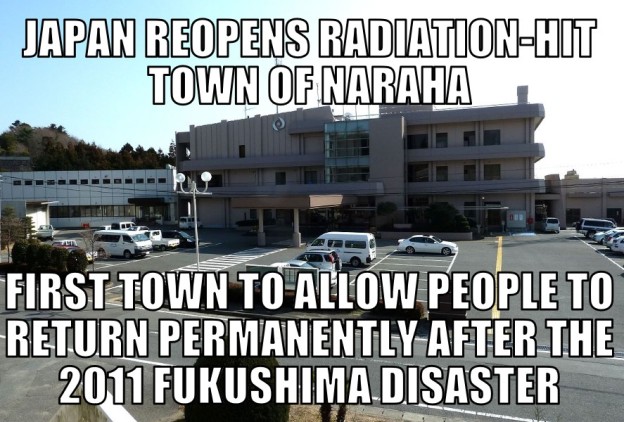In the aftermath of the Fukushima nuclear disaster in 2011, Naraha decided to oppose nuclear energy and call for the closure of the Fukushima No. 2 nuclear power plant that it co-hosts on the coast of the prefecture. Since the 1970s, the town has been home to the No. 2 plant, which first went into service in 1982. For decades, Naraha has received central government grants and subsidies for hosting the No. 2 plant, as well as tax revenues from TEPCO and its affiliates operating in the town.The plant also employed 860 people, many of them from Naraha and its surrounding communities.
Naraha had a population of about 8,000 before the Great East Japan Earthquake and tsunami caused the triple meltdown at TEPCO’s Fukushima No. 1 nuclear plant in March 2011. The crippled plant is located within 20 kilometers from Nahara. The quake and tsunami also created a scare at the No. 2 plant by leaving the facility with only a limited power supply from external sources and emergency diesel generators to cool the reactors. But the plant brought the situation under control.
After long remaining silent about the fate of the No. 2 plant, TEPCO decided to retire all of its four reactors, which were approaching their legal operating limit of 40 years. If the power company wanted to continue operations at the plant, it would have to spend hundreds of billions of yen on upgrades to meet the more stringent safety standards that were set after the accident at the No. 1 plant…
Although Naraha and Tomioka officials share concerns about their municipalities’ financial futures, they see a silver lining in the situation at the Fukushima No. 1 nuclear plant. Both towns have served as front-line bases for workers involved in decommissioning of the stricken plant. About 5,000 workers a day who are involved in the decommissioning effort provide steady business for convenience stores and other shops in the two towns. Business hotels, dorms and apartment buildings have been built in the towns and neighboring communities to accommodate the workers. Work to dismantle the No. 1 plant is expected to take decades to complete. Local officials said the closure of the No. 2 plant could bring about a similar economic boon. “Decommissioning can become a major industry,” Naraha Mayor Matsumoto said.
Excerpts from Nuclear plant closure brings hope, despair to Fukushima town
THE ASAHI SHIMBUN, October 18, 2018
